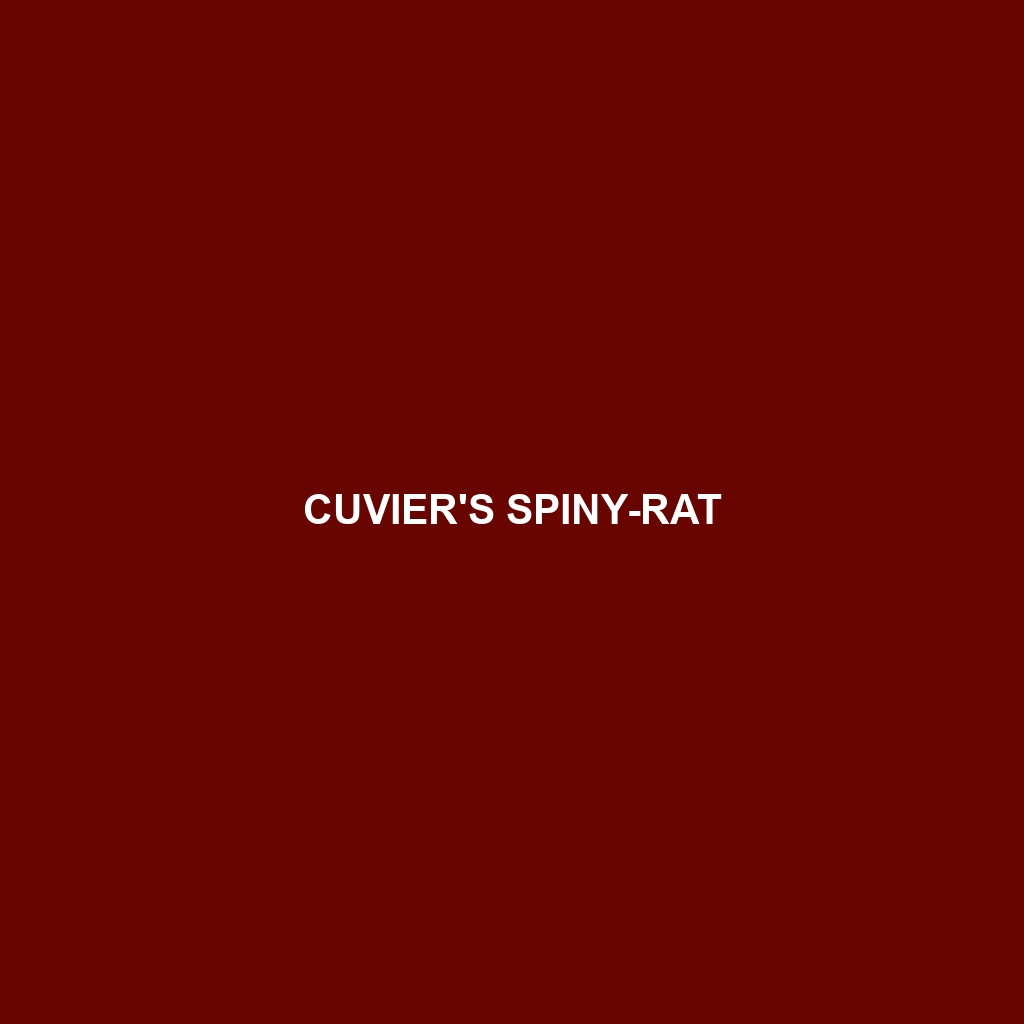Cuvier’s Spiny-rat: A Detailed Species Description
Common Name: Cuvier’s Spiny-rat
Scientific Name: Echimys chrysurus
Habitat: Cuvier’s Spiny-rat is primarily found in the tropical forests of South America, specifically in regions across the Amazon Basin, including Brazil, Peru, and Colombia. These rodents favor humid environments with dense underbrush, which provides ample cover and foraging opportunities. They are often associated with lowland rainforests and may inhabit areas near rivers or streams where vegetation remains thick.
Physical Characteristics: The Cuvier’s Spiny-rat is a medium-sized rodent, typically measuring about 25-35 cm in length, excluding the tail. It possesses a distinctive coat that features stiff, spiny hairs interspersed with softer fur, providing a unique texture and effective camouflage within its forest habitat. Adults often exhibit a rich brown or gray-brown coloration with a lighter underbelly. One of its standout features is the long, narrow head and prominent whiskers, which enhance its sensory perception.
Behavior: Cuvier’s Spiny-rat is predominantly nocturnal, engaging in foraging activities during the night. These rodents are known for their shy and elusive nature, often retreating to dense foliage to avoid predators. Socially, they tend to be solitary or found in small family groups, defending their territories with vocalizations and scent markings. Their agility and climbing skills allow them to navigate treetops and dense underbrush effectively, making them adept at escaping threats.
Diet: The diet of Cuvier’s Spiny-rat is primarily herbivorous, consisting mainly of fruits, seeds, nuts, and leaves. They play an essential role in their ecosystem as seed dispersers, facilitating forest regeneration. Additionally, they may occasionally consume insects and other small invertebrates, highlighting their opportunistic feeding habits.
Reproduction: Cuvier’s Spiny-rat typically breeds throughout the year, although the peak breeding season may coincide with favorable environmental conditions, such as increased food availability. After a gestation period of approximately 60 days, females give birth to litters of 2-4 offspring. The young are born altricial, meaning they are dependent on their mother for nutrition and care until they grow stronger and more independent.
Conservation Status: Currently, Cuvier’s Spiny-rat is classified as ‘Least Concern’ by the IUCN Red List, although habitat destruction and deforestation pose ongoing threats to its population in certain regions. Continued monitoring of their habitat and population trends is essential for ensuring their long-term survival.
Interesting Facts: Cuvier’s Spiny-rat is notable for its unique coat, which not only provides camouflage but also serves as protection against predators. Additionally, these rodents have a remarkable ability to withstand dry conditions, often emerging from their shelters to forage even during the drier months when food is scarce.
Role in Ecosystem: Cuvier’s Spiny-rat plays a vital role in its ecosystem as both a seed disperser and a prey species for larger predators. By feeding on various fruits and seeds, it aids in the promotion of plant diversity in the forest. As a prey animal, it contributes to the food web, supporting the diets of predators such as birds of prey and larger mammals.
